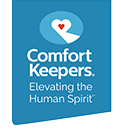According to the Centers for Disease Control and Prevention, chronic lower respiratory diseases are the third most common cause of death for those 65 years of age and older.
Harder to Breath for Seniors
The respiratory system, like many of the other human systems (e.g., cardiovascular, digestive), is a wondrously complex and sophisticated arrangement of organs working together to maintain homeostasis. Its primary role, allowing the intake of oxygen and removal of carbon dioxide as waste, can’t be understated, but the respiratory system also plays an important part in regulating aspects of vocalization and our sense of smell.
And yet, despite its immense efficiency and vital contributions, the respiratory system is ultimately something we tend to take for granted – that is, until it begins to work at anything less than an optimum level. This is especially true as we begin to age, due in part to the decline in functionality.
Age-Related Senior Respiratory Changes
Our lungs fully mature by the age of 25, but by age 35, their alveoli – the air sacs that regulate the exchange of oxygen and carbon dioxide – begin to lose shape and form. Additionally, as the lung’s muscle tissue loses elasticity, airways close off which then hinders the distribution of oxygen. Both changes cause air to become trapped in the lungs, making breathing much more difficult.
The nervous system also goes through a number of changes as we age. For instance, the portion of the brain that regulates breathing can begin to experience diminished functionality. As a result, carbon dioxide collects in the lungs. There can also be reduced sensitivity of the nerves that trigger coughing in the airways. This can cause a significant buildup of particles in the lungs.
Oxygen levels can also decrease as our bones change shape and become thinner. The ribcage, for example, is not able to expand and contract as efficiently during the breathing process. Additionally, the diaphragm – pivotal in regulating air in and out of the lungs – can begin to weaken, negatively affecting inhalation/exhalation.
In addition to the age-related changes, there are other factors – smoking, exposure to air pollutants, and genetics – that can exacerbate the effects of these changes and lead to life-threatening conditions or diseases.
COPD in Seniors
One of the most severe respiratory diseases, one that primarily affects people between the age of 65 and 74, is chronic obstructive pulmonary disease (COPD). According to Statistics Canada there are over 1.5 million Canadians who have been diagnosed with COPD. But despite its commonality, COPD is quite serious and can significantly impact quality of life.
COPD technically includes chronic bronchitis, emphysema, and asthma, and is caused by blocked airways. It can cause a number of symptoms, including:
- Constant coughing
- Wheezing
- Shortness of breath
- Coughing up mucus
- Tightness in the chest
Because COPD’s symptoms are somewhat vague and correspond with age-related changes, it’s not uncommon for it to go undiagnosed. And compared to many other diseases, COPD develops quite slowly. In fact, it’s been reported that, of the estimated 24 million people who have COPD, approximately half are unaware that they have it. That’s why it’s imperative your senior loved ones pay attention to any irregularities in their breathing and report them to their physician, who should then organize a spirometry test. This will measure the volume and flow of air that a person can blow from his/her lungs, which will help their physician determine if there is COPD.
While it’s true that there is no cure for COPD, there are ways to help manage its symptoms and slow progress through treatment. Medications, such as bronchodilators and inhaled steroids can be used to help open airways and reduce inflammation. Doctors may also recommend getting vaccinations for both influenza and pneumococcal pneumonia in order to guard against further breathing complications.
Additionally, as smoking is considered the most common cause of COPD, quitting is the primary recommendation for treatment. Other recommendations include avoiding air pollutants (both indoor and outdoor), exercising, and maintaining a healthy diet.
Helping Elders Maintain a Healthy Lifestyle
Following your physician’s recommendations and management plans can help your aging loved ones live more comfortably with COPD. Even if they are not necessarily at risk of developing COPD, aging adults should understand the impact of aging on their respiratory system and how to reduce their risk of any related diseases, illnesses, or conditions.
Comfort Keepers® Can Help
If your aging loved ones are faced with respiratory challenges and aren’t able to perform normal activities, our caregivers, who we call Comfort Keepers®, can help. We can prepare nutritious meals, encourage prescribed physical activity, and safely help your loved ones run errands, shop, and get to any scheduled appointments. Call your local office today to discuss our available services.
References:
- Aging Care. “An Overview of COPD” by National Institutes of Health. Web. 2017.
- Unity Point Health. “The Top 8 Respiratory Illnesses and Diseases.” Web. 2014.
- Medline Plus. “Aging Changes in the Lungs.” Web. 2017.
- American Lung Association. “Lung Capacity and Aging.” Web. 2017.
- Centers for Disease Control and Prevention. “Chronic Respiratory Disease.” Web. 2017.
- Statistics Canada. 2014. Health Trends. Statistics Canada Catalogue No. 82-213-XWE. Ottawa. Web 2017.

